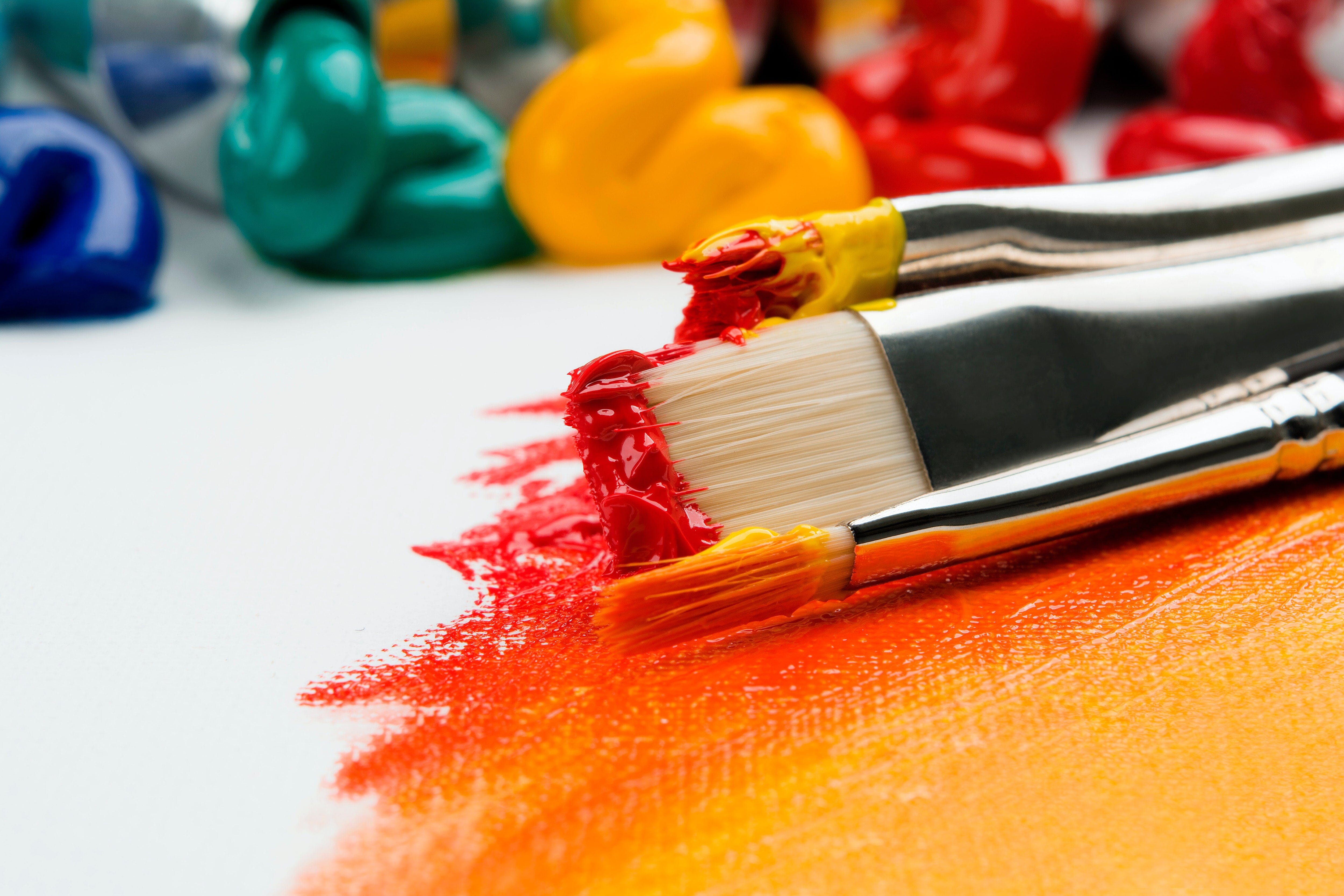For generations Gouache has been used by illustrators, animators, and watercolourists. The contribution of Gouache's seamless beauty has gone largely unrecognized by the general public. As an artist, Gouache may be just the thing you're missing!
x
Gouache (pronounced guh-wash or goo-wash) has a surprisingly long history dating back to the 1600's. Gouache is an opaque, water-based, pigment paint. Gouache is a French name derived from the Italian word guazzo which means water-paint and/or water-painting. Gouache is also sometimes referred to as bodycolor because of its heavy body and opacity in comparison to watercolours.
x

painting by Kai Carpenter
x
The Look
The easiest way of explaining the appearance of gouache is to say it is a fine-art quality tempera paint; it dries very quickly to a very matte finish. At first glance, many gouache paintings can be easily mistaken for a wet-on-wet oil painting. Overall, gouache colours appear deep and saturated yet soft and velvety.

Paint Composition
Similar to transparent watercolours, gouache paint consists of pigment, and a binding agent (often gum arabic, dextrin, or polypropylene ...or a combination of the three). Both gouache and watercolour paints perform most reliably on a paper substrates. The differences between watercolour and gouache begin with the pigments used; watercolour pigments are ground very fine, allowing the minute particles to be adsorbed by paper substrates, with some colours creating a chemical bond where the paint and paper become one (a.k.a. staining; many watercolour hues are known and loved for their staining properties). Gouache paint sits on the surface of paper and doesn't readily soak-in like watercolours because the pigments used in gouache are much more coarse (the pigment particles are just too large to mesh with the fibers of the paper). In addition to pigment powder, some gouache paints also contain an inert filler (such as chalks), which is the root of some workability issues.
Z

An African landscape in gouache by Eghosa Raymond Akenbor
Workability
Even after drying, an artist quality gouache should be re-wettable and re-workable (just like artist quality watercolours). The most challenging characteristic of gouache is that it dries to a different value than it appears when wet - lighter hues dry darker, while darker hues dry lighter. This can result in a flattening and loss of depth in your painting, not to mention the difficulty in colour matching over multiple painting sessions. However, because of the fast drying time and opaque coverage, gouache is an ideal media for alla prima and plein air painting techniques where pieces are completed in a single session.
z

Plein air painting by James Gurney (He further explains that this painting covers an unsuccessful/embarassing watercolour painting in his sketchbook)
z
Gouache is truly the ultimate chameleon of artistic media, it can achieve almost any look... You have been exposed to more gouache art than you ever realized; from billboard and magazine ads to almost every classically animated cartoon. Gouache is able to handle almost any task, from graphic design to high realism.
Every image below is rendered in gouache.

above painting by Robbie Graham
z

above painting by Kailey Lang
z

above fashion illustration by Patsy Fox
x

above painting by Isabella Koelman
z

above painting by Jon Whitcomb
z

above painting by Ralph Parker
z

An original 1946 magazine illustration in gouache
z

Industrial design and rendering in gouache
z

An original animation cell from Pinocchio done in gouache
z
Tech Tips
White-out
Titanium white gouache is the secret weapon of many (or dare I say most) watercolourists. White gouache functions as an artist-quality correction fluid, quietly and invisibly covering muddy areas on your page, restoring the essential white spaces in watercolour paintings or ink work.
z
Cracking
Avoid thick, undiluted applications of gouache as they have a tendency to crack after drying. The opacity and matte finish of gouache is a result of the high level of pigment used in its formulation (meaning the proportion of binder to pigment is lower than in watercolours resulting in a weaker paint film). Gum arabic can be added as a paint medium, however it will increase both the transparency and the sheen of gouache colours. Any cracking can usually be attributed to one of two reasons;
- Not enough water/medium was used to dilute the colour resulting in a thicker, weaker film (please note that the amount of water needed will differ with each colour.)
- If painting in layers, the subsequent ones may show cracking if the underlayer absorbs binder from the new layers of wet colour. To avoid this, considering spraying the base-layer with a workable fixative before re-working. This will add strength to the lower layers as well as provide a moisture buffer, preventing the dry layers from re-wetting.
Z
Plays Well With Others
Gouache is a very agreeable medium. It can be used alongside waterclours, pen and inks (both alcohol and waterbased), graphite and coloured pencils.
z
Below, Fabio Mantovani used watercolour and gouache over a graphite sketch






